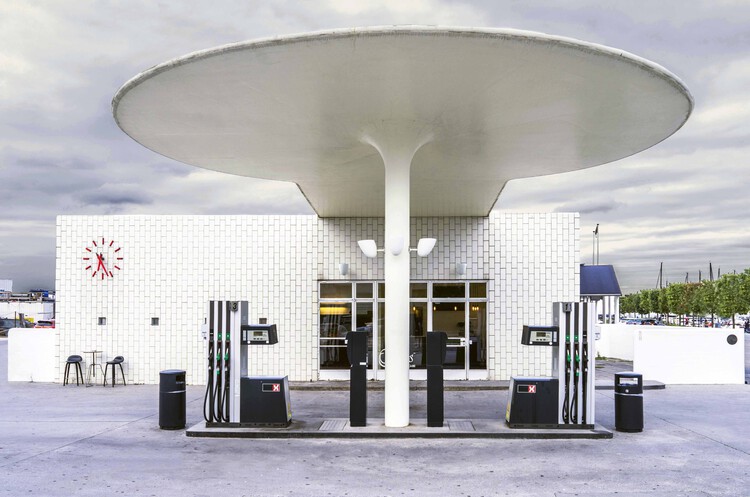 Skovshoved Petrol Station / Arne Jacobsen. Image © Di Madeira78, via Wikipedia under CC BY-SA 4.0
Skovshoved Petrol Station / Arne Jacobsen. Image © Di Madeira78, via Wikipedia under CC BY-SA 4.0
Share
Share
Or
https://www.archdaily.com/1028278/the-evolution-of-gas-stations-from-roadside-stops-to-architectural-landmarks
The gas station is an architectural typology that has undergone significant transformations since its inception. Initially, these structures were simple roadside refueling points designed for functionality rather than aesthetics. As automobile culture expanded, gas stations evolved to accommodate new technologies, shifting urban landscapes and changing consumer behaviors. Over time, they became more than just utilitarian stops — they developed into service hubs, integrating restaurants, motels, and leisure spaces, responding to contemporary transportation increasing demands.
By the late 20th century, however, the widespread standardization of gas stations led them to be perceived as “non-places”, a concept defined by anthropologist Marc Augé to describe transient spaces that lack social or cultural significance. With uniform designs and a focus on efficiency, gas stations became interchangeable, reinforcing their role as purely functional infrastructure rather than meaningful architectural interventions. This standardization also departed from the era when fuel stations served as recognizable landmarks, contributing to a homogenized landscape devoid of local identity.
Today, with the rise of electric vehicles, gas stations — and their emerging counterpart, charging stations — are undergoing yet another transformation. Unlike conventional fueling, EV charging requires extended dwell times, necessitating new spatial configurations. This shift redefines the architectural significance of these infrastructures, turning them from fleeting stops into places of permanence and interaction, challenging architects to rethink their role in contemporary mobility networks.
Related Article What is the Future of the Gas Station? 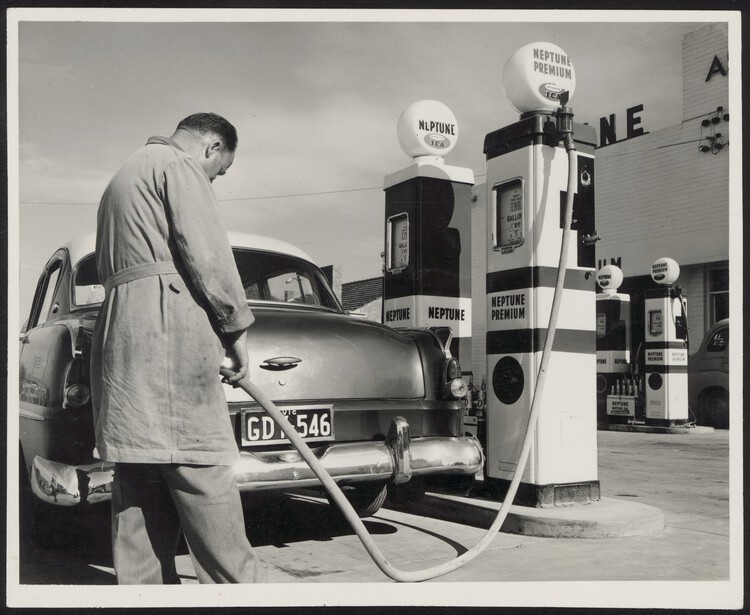 Neptune service station, Helmut Newton. Image © State Library Victoria, Identifier H2006.47/656The Early Days: Functionality and Roadside Landmarks
Neptune service station, Helmut Newton. Image © State Library Victoria, Identifier H2006.47/656The Early Days: Functionality and Roadside Landmarks
The first gas stations emerged in the early 20th century as automobiles became more prevalent. Initially, small, kiosk-like structures staffed by attendants, these early fueling points prioritized practicality over architectural expression. However, by the 1920s and 1930s, oil companies began to recognize the potential of architecture as a powerful branding tool. Station designs quickly became standardized, establishing distinctive visual identities and serving as landmarks along expanding highway networks. Notable projects from this period include Frank Lloyd Wright’s R.W. Lindholm Service Station (1958) in Minnesota, which exemplifies how gas stations started integrating into a broader architectural language, moving beyond their purely utilitarian origins.
These early stations served as visual markers along highways, adopting Art Deco and Streamline Moderne styles to express speed, modernity, and technological progress. Bold geometric forms, neon signage, and sleek lines became symbols of an optimistic automobile age, creating an instantly recognizable architectural language. Companies like Shell and Texaco developed signature station designs that became synonymous with their corporate identity, blending efficiency with an aesthetic appeal that reflected the optimism of the automobile age. Some designs, such as the Shell clamshell stations of the 1930s, became icons in their own right, demonstrating how branding and architecture could merge to create distinctive roadside landmarks.
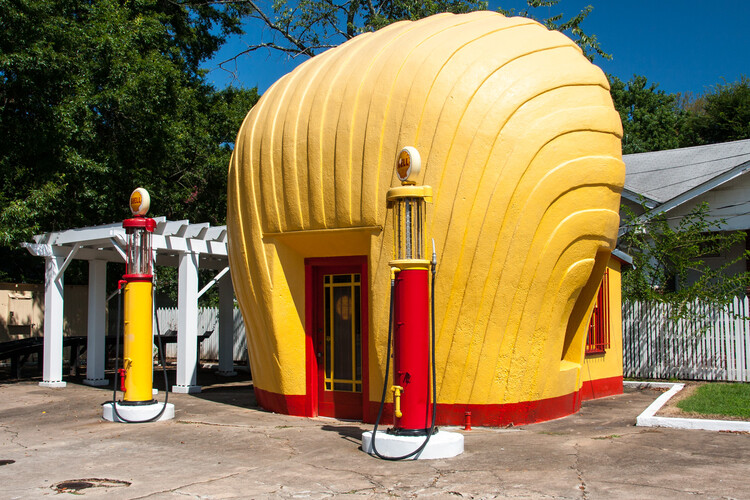 Shell Service Station, Sprague and Peachtree Sts., NW Winston-Salem. Image © David Bjorgen, via Wikipedia under CC BY-SA 3.0
Shell Service Station, Sprague and Peachtree Sts., NW Winston-Salem. Image © David Bjorgen, via Wikipedia under CC BY-SA 3.0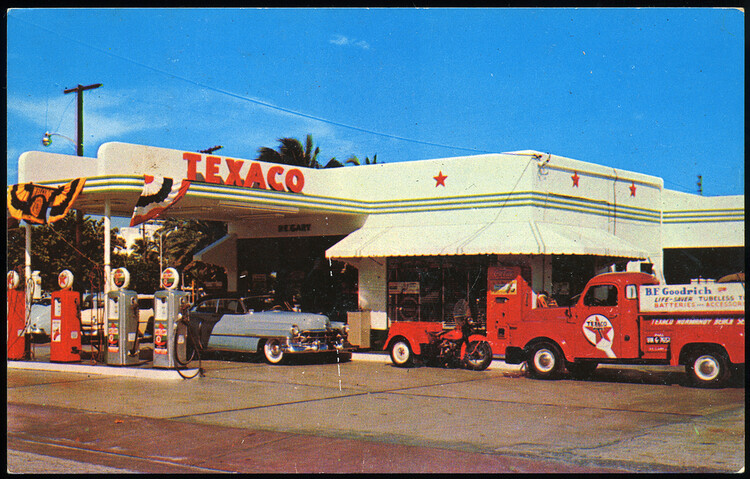 Texaco Gas Station, 1950s. Image © Roadsidepictures via Flickr under CC BY-NC 2.0
Texaco Gas Station, 1950s. Image © Roadsidepictures via Flickr under CC BY-NC 2.0
A significant architectural innovation was the canopy — originally a practical shelter protecting attendants and customers from weather conditions. Over time, however, canopies became central design elements, evolving from functional features into expressive architectural statements. Architect Eliot Noyes’s Esso Mobil Station in Leicester (1960s) exemplifies this shift, using its bold geometric canopy as a clear statement of modernist aesthetics and corporate identity. Similarly, Ludwig Mies van der Rohe’s 1963 Standard Station in Montreal integrated the architect’s minimalist principles into gas station design, employing clean lines and extensive glazing to redefine the aesthetic language of fueling infrastructure. In the UK, National Benzole adopted distinctive pagoda-like canopies, illustrating how architectural form could reinforce visual branding and create memorable landmarks.
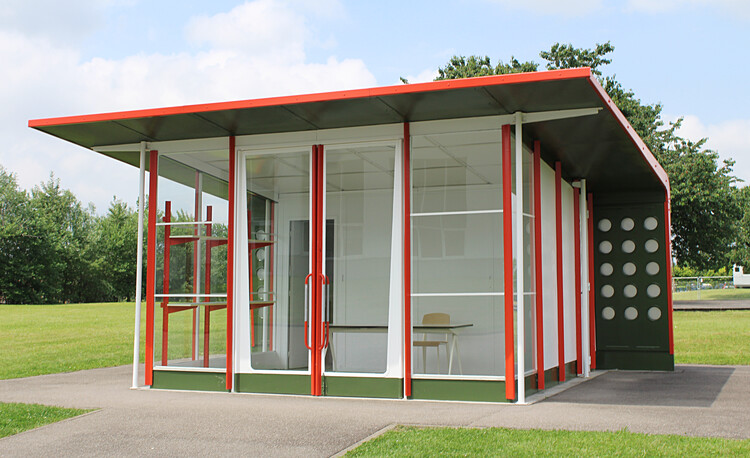 Petrol Station / Jean Prouvé . Image © trevor.patt via Flickr under CC BY-NC-SA 2.0
Petrol Station / Jean Prouvé . Image © trevor.patt via Flickr under CC BY-NC-SA 2.0
In “Studies on Types: Filling Stations” publication, the Architectural historian Tiago Borges emphasizes the symbolic and practical significance of canopies in Western gas station design, noting:
In the West, the canopy became the raison d’être of the service station, where complexity and contradiction meet. On one hand, this element can be seen as the sign of the service station — the ‘decorated’ canopy. On the other hand, it is also the element whose form and presence carry identity and function — the ‘duck’ canopy”- The canopy became the quintessential working element for designers and architects who never tried of designing it while the kiosk or convenience store remained faithful to the image of a regular rectangular box with functional interiors.
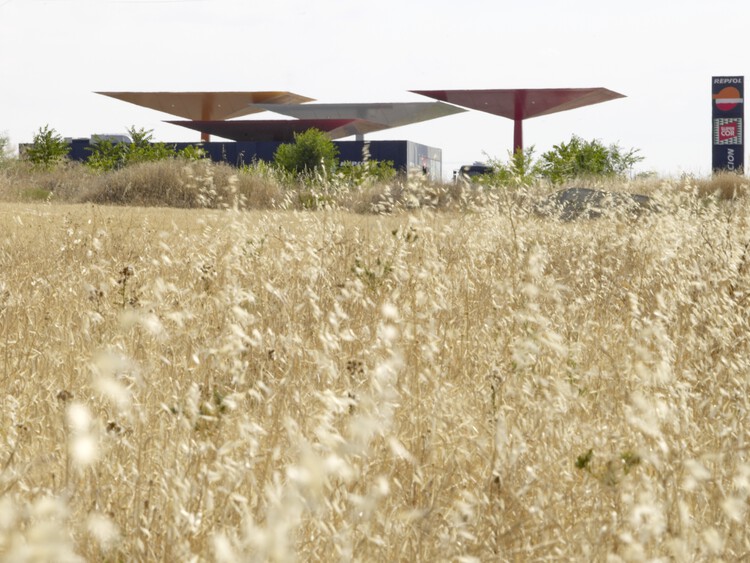 Repsol / Foster + Partners. Image Courtesy of Nigel Young / Foster Partners
Repsol / Foster + Partners. Image Courtesy of Nigel Young / Foster Partners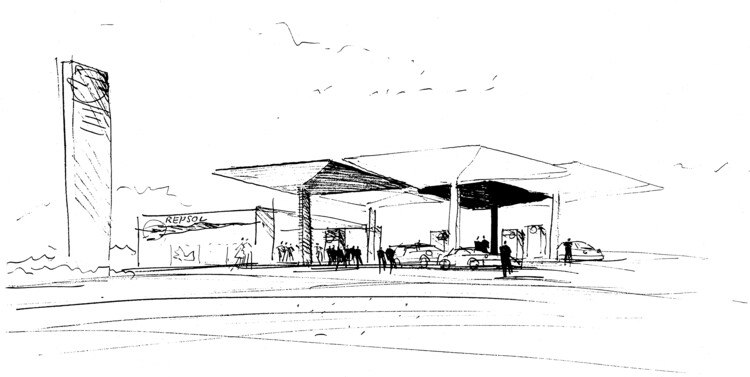 Repsol concep Sketch. Image Courtesy of Norman Foster / Foster + Partners
Repsol concep Sketch. Image Courtesy of Norman Foster / Foster + Partners
This dual role illustrates the architectural complexity and communicative potential inherent in gas station canopies, establishing them as fundamental components in the historical and cultural narrative of roadside architecture.
Mid-Century Expansion: The Rise of Service Hubs
The mid-20th century marked a transformative era in gas station architecture, closely tied to broader social and economic developments. Post-war prosperity, the mass production of affordable automobiles, suburban expansion, and extensive highway construction projects reshaped mobility patterns significantly.
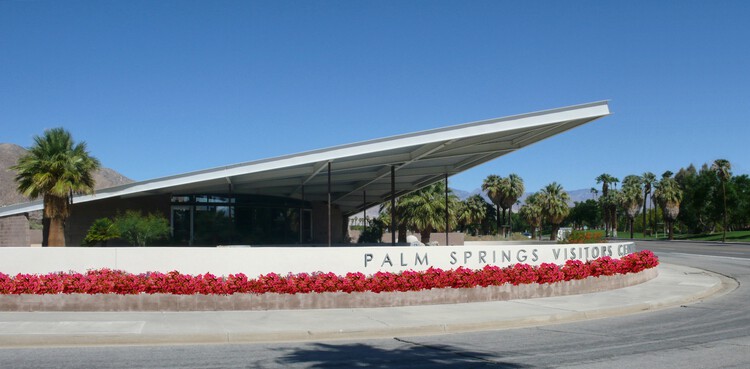 Tramway Gas Station / Albert Frey. Image © Bryanb7 via Wikipedia under CC BY-SA 4.0
Tramway Gas Station / Albert Frey. Image © Bryanb7 via Wikipedia under CC BY-SA 4.0
In the United States, the development of the Interstate Highway System spurred long-distance travel, creating the need for comprehensive roadside amenities. Gas stations responded by evolving beyond their initial role as mere fueling stops, transforming into multifunctional service hubs. Integrating diners, motels, repair shops, and retail outlets, these facilities became vital nodes within the emerging automobile-centric culture, designed to encourage prolonged visits rather than transient stops.
The architectural expression of gas stations during this period reflected both functional demands and evolving consumer expectations. Large-scale developments, such as the iconic American highway rest stops, exemplified this transformation. In Europe, the Italian Autogrill network introduced highway stations that combined sophisticated architectural forms with practical needs, often employing bold, cantilevered structures spanning highways. These rest areas served as functional infrastructure — landmarks embodying the spirit of mobility, leisure, and modern life.
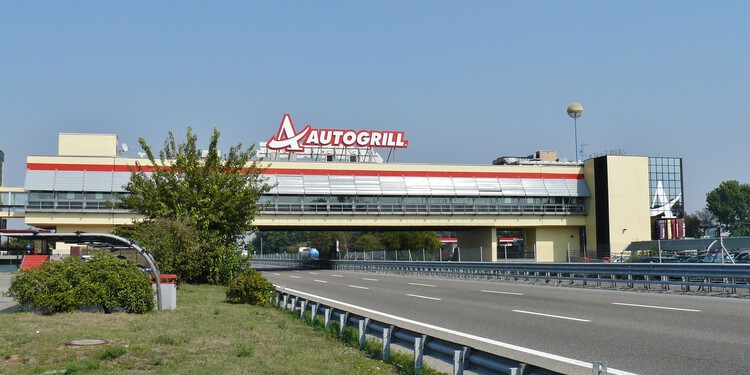 Autogril. Image © qwesy qwesy via Wikipedia under CC BY 3.0
Autogril. Image © qwesy qwesy via Wikipedia under CC BY 3.0
The introduction of self-service pumps in the 1970s significantly reshaped gas station design, emphasizing efficiency and convenience over distinct architectural expression. This shift resulted in smaller, simplified footprints, reduced staffing requirements, and standardized layouts. Technological advances in payment systems and pump automation facilitated independent refueling, accelerating a broader societal trend towards efficiency and impersonality. Early adopters of this self-service model, including the United States and Sweden, established a blueprint that influenced fueling infrastructure globally, gradually eroding architectural diversity in favor of uniformity and convenience.
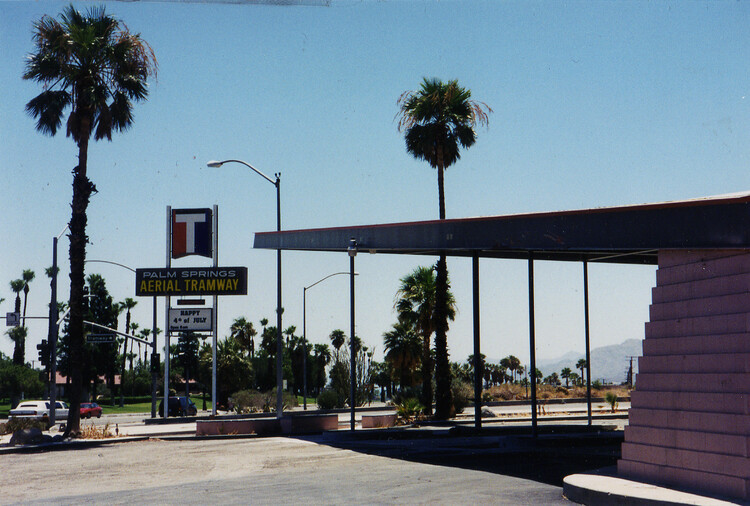 Tramway Gas Station / Albert Frey. Image © Denna Jones via Flickr under CC BY 2.0
Tramway Gas Station / Albert Frey. Image © Denna Jones via Flickr under CC BY 2.0
However, not all mid-century gas station architecture succumbed to standardization; architects such as Arne Jacobsen integrated refined modernist aesthetics into everyday structures. Jacobsen’s Skovshoved Petrol Station (1936) in Denmark demonstrated how clean lines, minimalist detailing, and a visually striking canopy could elevate a utilitarian space into an architectural landmark. This structure represented a deliberate contrast with the exaggerated, futuristic automotive designs of the time, revealing tensions between architectural minimalism and popular design excess.
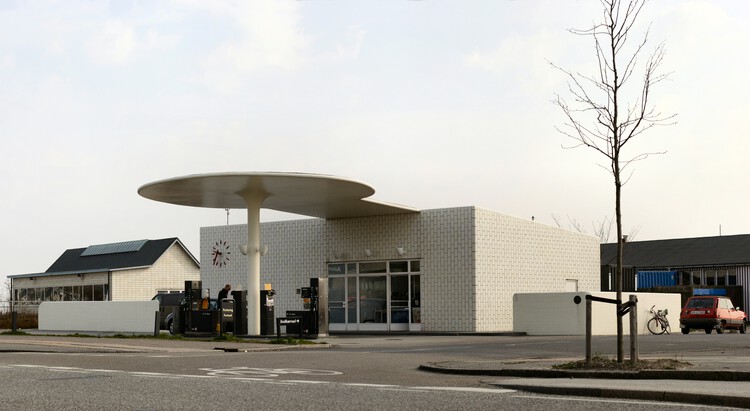 Skovshoved Petrol Station / Arne Jacobsen. Image © Villy Fink Isaksen via Wikipedia under CC BY-SA 4.0The Concept of the ‘Non-Place’: Gas Stations as Transitory Spaces
Skovshoved Petrol Station / Arne Jacobsen. Image © Villy Fink Isaksen via Wikipedia under CC BY-SA 4.0The Concept of the ‘Non-Place’: Gas Stations as Transitory Spaces
By the late 20th century, gas station architecture underwent a marked transition toward standardization, reflecting broader trends in prefabrication, globalization, and operational efficiency. Architectural individuality diminished significantly as standardized designs, driven by cost optimization and rapid construction methods, became the dominant approach. This era was defined by modular, prefabricated structures designed primarily for functional effectiveness rather than aesthetic consideration or contextual integration. Consequently, gas stations gradually lost their status as unique roadside landmarks and instead became interchangeable, generic entities disconnected from their surroundings and local identities.
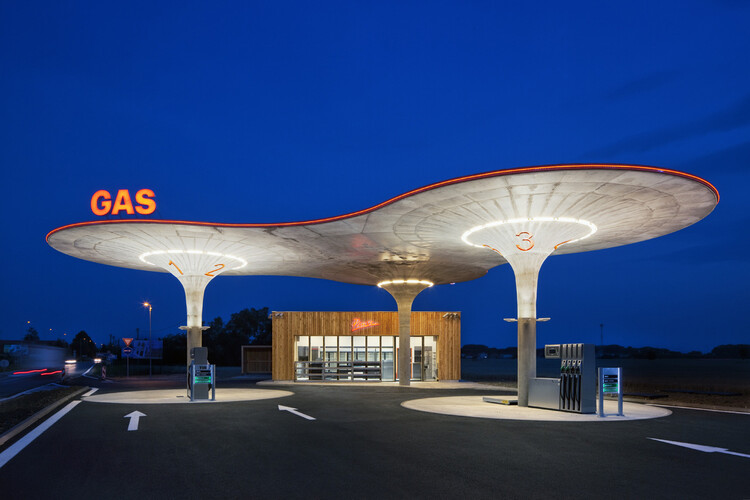 Gas Station / Atelier SAD. Image © Tomas Soucek
Gas Station / Atelier SAD. Image © Tomas Soucek
Anthropologist Marc Augé captured this broader cultural shift through his concept of “non-places” —spaces characterized by anonymity, transience, and purely functional interactions. Augé’s idea effectively encapsulated the architectural evolution of gas stations, transforming them from thoughtfully designed destinations into transient points of minimal human engagement. Designed chiefly for the efficient processing of vehicles and drivers, gas stations became isolated functional islands in both urban and suburban landscapes, intentionally divorced from social or cultural interactions. The station layout itself was increasingly defined by optimization strategies — focusing solely on minimizing refueling times, maximizing customer turnover, and simplifying circulation.
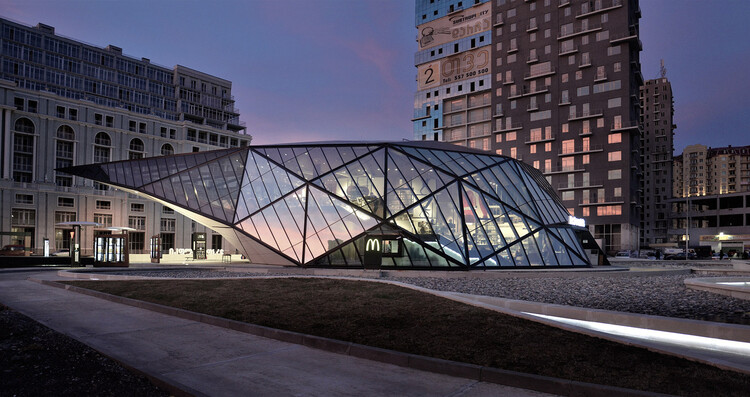 Fuel Station + McDonalds / Khmaladze Architects. Image © Giorgi Khmaladze
Fuel Station + McDonalds / Khmaladze Architects. Image © Giorgi Khmaladze
This architectural homogenization was part of a wider phenomenon affecting various public and commercial spaces, including airports, shopping malls, highways, and hotels. Like gas stations, these infrastructures evolved to prioritize seamless transit and high throughput, resulting in designs that suppressed architectural expressiveness in favor of predictable, standardized experiences. Consequently, local cultural nuances, historical references, or contextual sensitivity were systematically minimized or abandoned entirely.
The proliferation of standardized stations can also be linked to changing economic models within the petroleum industry. As gas station franchises and multinational oil corporations sought to ensure consistent customer experiences globally, branding strategies and architectural decisions became centralized, further diminishing localized design variations. Uniform corporate colors, repetitive signage, and identical canopy and convenience store layouts established a globally recognizable — but culturally neutral — identity.
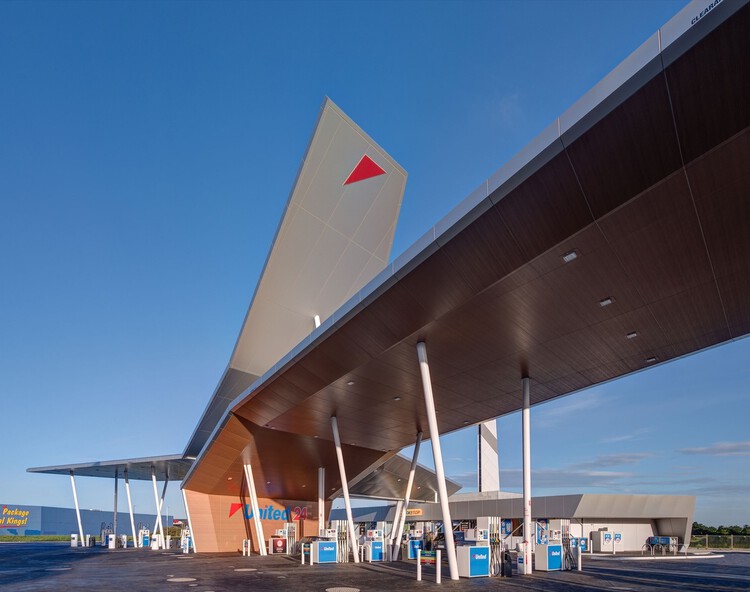 United Petroleum / Peddle Thorp Architects. Image © Jaime Diaz-Berrio
United Petroleum / Peddle Thorp Architects. Image © Jaime Diaz-Berrio
This transition represented a significant departure from earlier eras, where architects consciously utilized distinctive designs to express modernity, progress, or corporate identity. The result was a built environment increasingly dominated by indistinct, purely utilitarian structures that deliberately minimized their spatial and aesthetic significance. It raises critical questions about the role of architecture in shaping public life and the responsibility to create meaningful places rather than merely functional infrastructure.
The Electric Revolution and the Future of Fueling Infrastructure
The rapid adoption of electric vehicles is fundamentally reshaping the architectural paradigm of fueling stations. Unlike traditional refueling — typically quick and transactional — electric charging involves significantly longer waiting periods. While technological innovations progressively reduce charging durations, the current reality necessitates new spatial and functional considerations for charging stations. This transformation challenges the established architecture of fueling infrastructure, shifting the focus from purely operational efficiency toward accommodating prolonged stays.
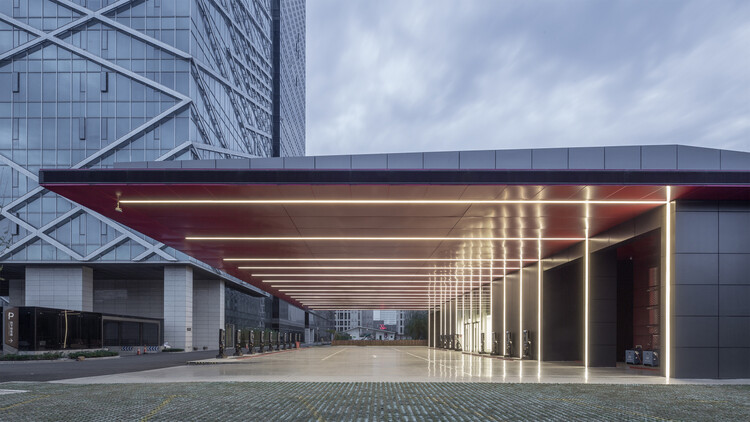 Hangzhou Inventronics Electric Vehicle Charging Station / GLA. Image © shiromio studio
Hangzhou Inventronics Electric Vehicle Charging Station / GLA. Image © shiromio studio
Despite these changes, service station architecture has historically remained surprisingly static. Tiago Borges notes that “amid the rapid evolution of automotive technology, service stations have remained largely unchanged”, maintaining a consistent global image rooted in their earliest iterations. The persistence of the traditional station typology — comprising fuel pumps, canopy, convenience store, and ancillary services — underscores an enduring architectural identity that resisted radical innovation for decades.
Architectural responses to these new realities are already evident in contemporary projects, reshaping the conventional image. COBE’s Ultra-Fast Charging Station in Denmark (2019) exemplifies this shift with modular wooden canopies designed to create inviting, human-scaled environments conducive to extended stays. Similarly, Tesla’s Supercharger network integrates spaces for relaxation, socialization, and leisure, redefining the fueling stop into a meaningful and enjoyable pause within journeys.
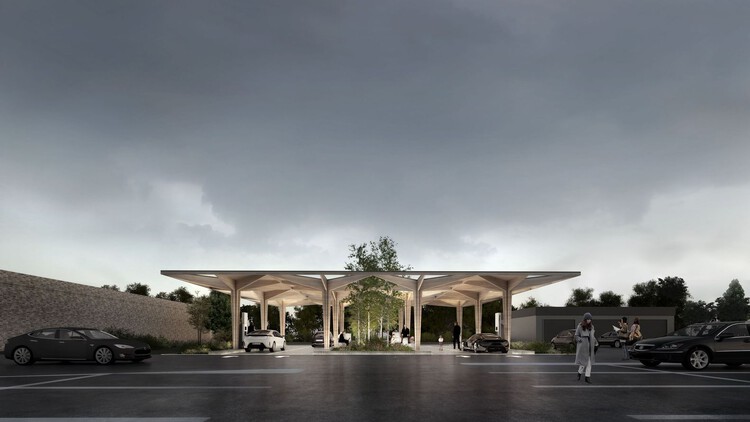 COBE and CLEVER Team Up to Design New Electric Car Charging Stations. Image © COBE
COBE and CLEVER Team Up to Design New Electric Car Charging Stations. Image © COBE
The critical impact of electric vehicles on fueling stations is not solely related to prolonged charging times but, more significantly, to the possibility of charging vehicles virtually anywhere. This shift toward decentralized, omnipresent charging — akin to charging personal electronic devices — may ultimately lead to the obsolescence of standalone stations, dissolving traditional boundaries between infrastructure and everyday spaces.
This evolving landscape represents both a threat and an opportunity for conventional gas stations. With the decreasing need for conventional fueling, many of these structures face a stark choice: adapt and reinvent themselves or risk closure. According to recent studies cited by Tiago, this changing dynamic predicts a dramatic decline in traditional fuel sales — up to 36% — and a corresponding 43% reduction in the number of service stations across the EU by 2050. This shift translates into nearly 47,000 structures needing adaptation, reconversion, or dismantling.
Architectural innovation is also reflected in adaptive reuse projects that envision the future of obsolete service stations. For instance, Carmody Groarke’s conversion of a former petrol station at London’s King’s Cross illustrates how existing fueling infrastructure might be creatively repurposed to accommodate new uses, from dining and cultural programs to public gathering spaces. Such projects underscore the transformative potential inherent in existing fueling typologies, highlighting the opportunity for architecture to guide the shift from transient, purely functional non-places toward active urban nodes enriched by social and cultural interactions.
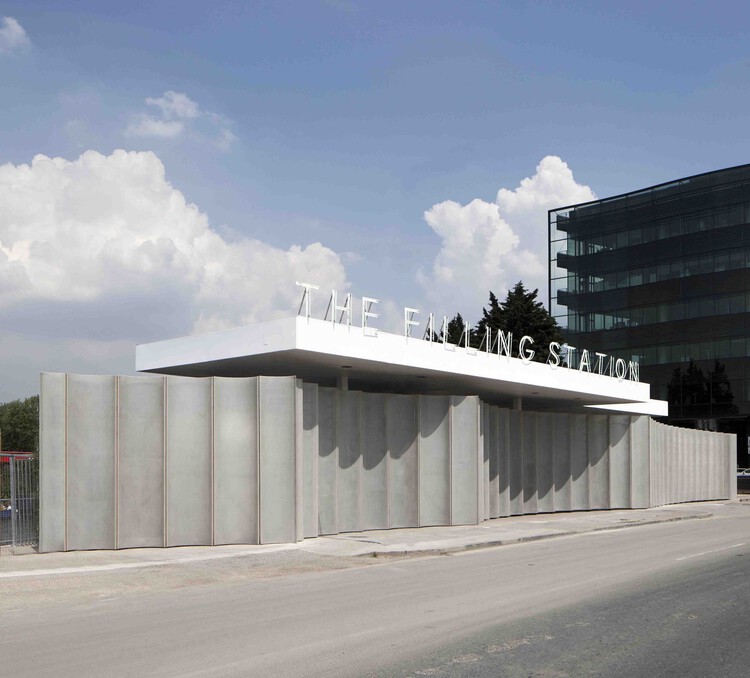 The Filling Station / Carmody Groarke. Image © Luke Hayes
The Filling Station / Carmody Groarke. Image © Luke Hayes
Looking forward, the architecture of fueling infrastructure will increasingly emphasize adaptability, sustainability, and integration within the broader urban fabric. Stations may transform into multifunctional urban energy hubs seamlessly embedded within residential, commercial, and public spaces. Rather than existing as isolated nodes, these infrastructures could play an active role in community building and urban revitalization, transcending their functional origins to support richer, socially engaged urban experiences.
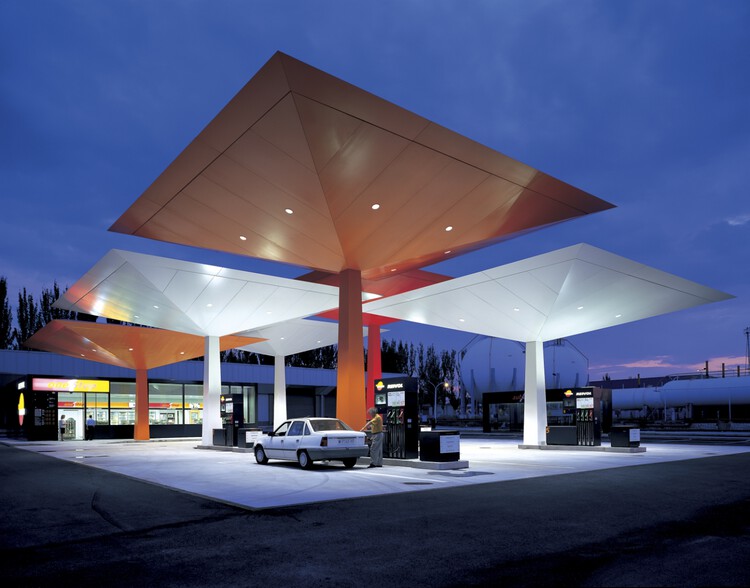 Repsol / Foster + Partners. Image Courtesy of Nigel Young / Foster Partners
Repsol / Foster + Partners. Image Courtesy of Nigel Young / Foster Partners
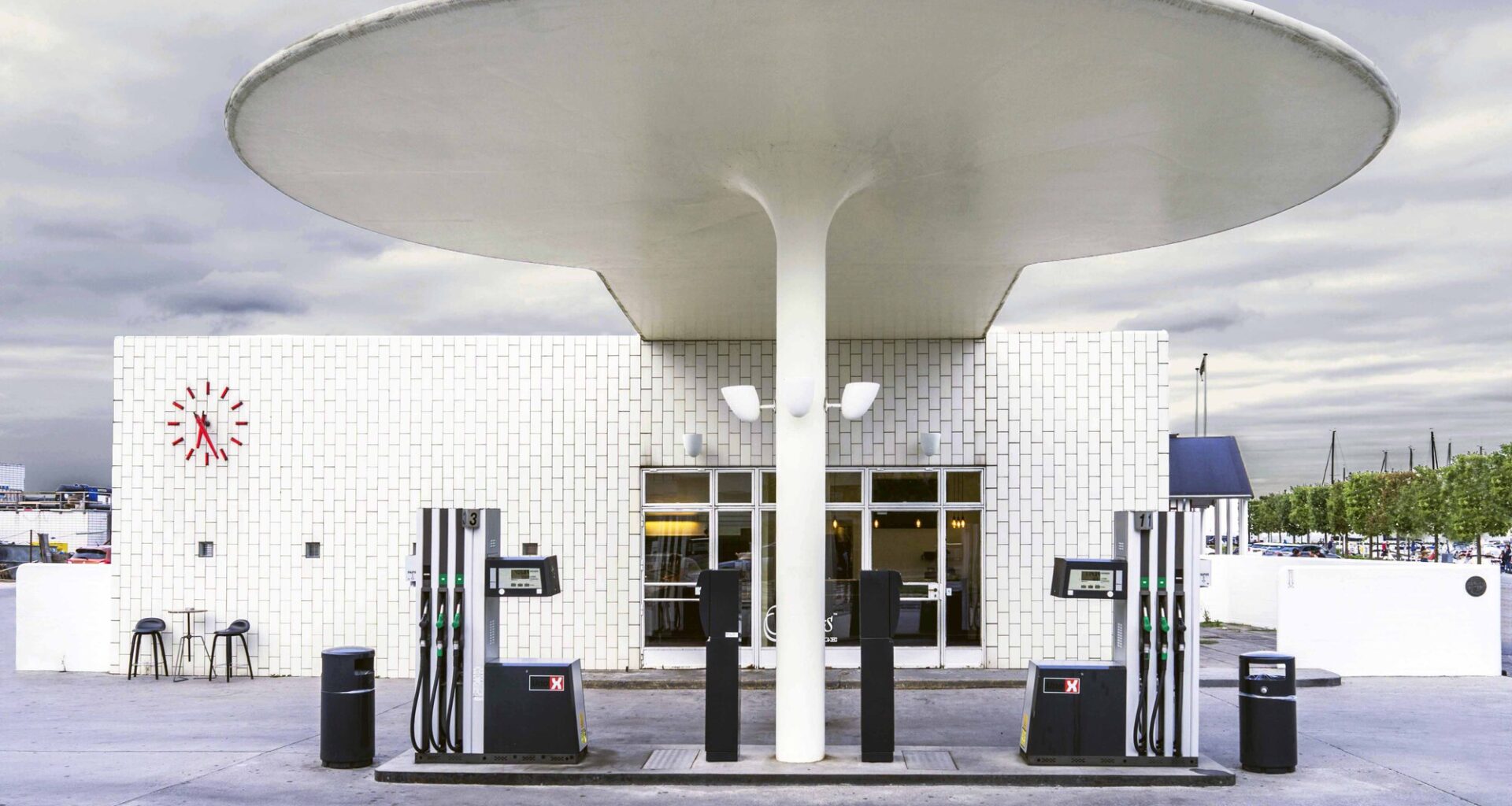
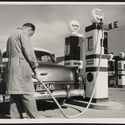
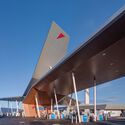
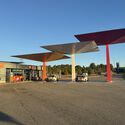

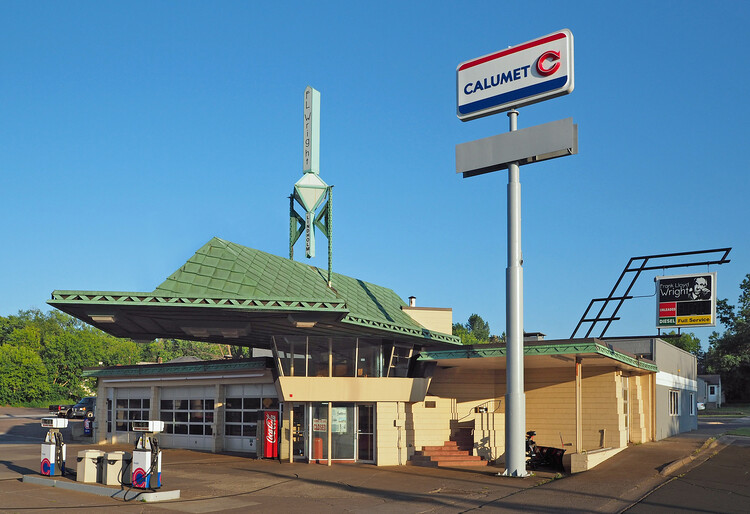 R. W. Lindholm Service Station / Frank Lloyd Wright. Image © McGhiever via Wikipedia under CC BY-SA 4.0
R. W. Lindholm Service Station / Frank Lloyd Wright. Image © McGhiever via Wikipedia under CC BY-SA 4.0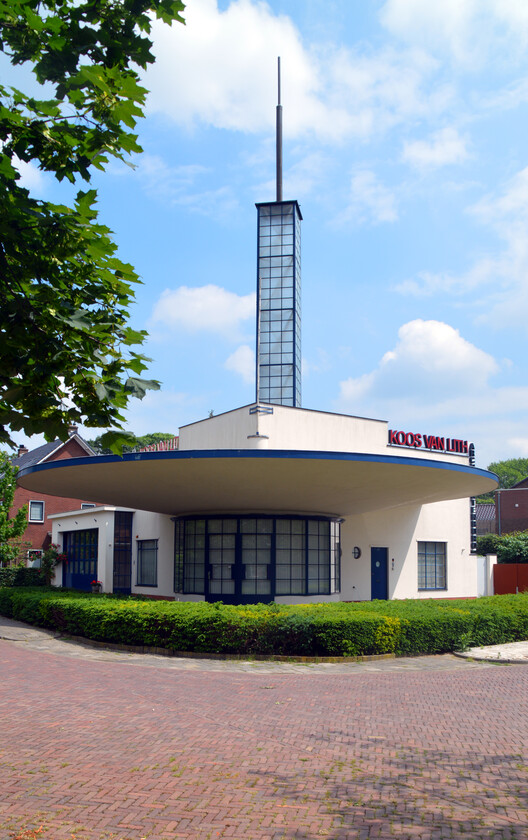 Auto Palace Gas Station / B.J. Meerman and Johan van der Pijll, Roger Veringmeier. Image © Roger Veringmeier, via Wikipedia under CC BY-SA 4.0
Auto Palace Gas Station / B.J. Meerman and Johan van der Pijll, Roger Veringmeier. Image © Roger Veringmeier, via Wikipedia under CC BY-SA 4.0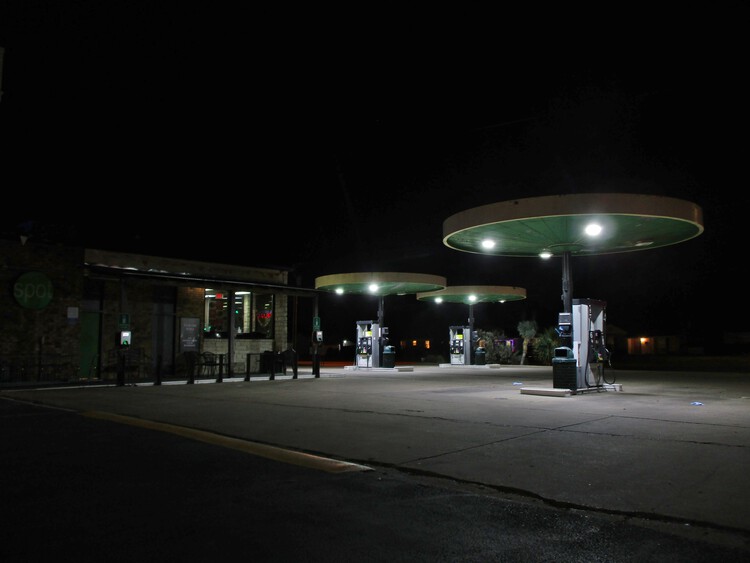 Eliot Noyes, Mobil Gas Station, Dallas, TexaS. Image © Charles Hathaway via Flickr under CC BY-NC-SA 2.0
Eliot Noyes, Mobil Gas Station, Dallas, TexaS. Image © Charles Hathaway via Flickr under CC BY-NC-SA 2.0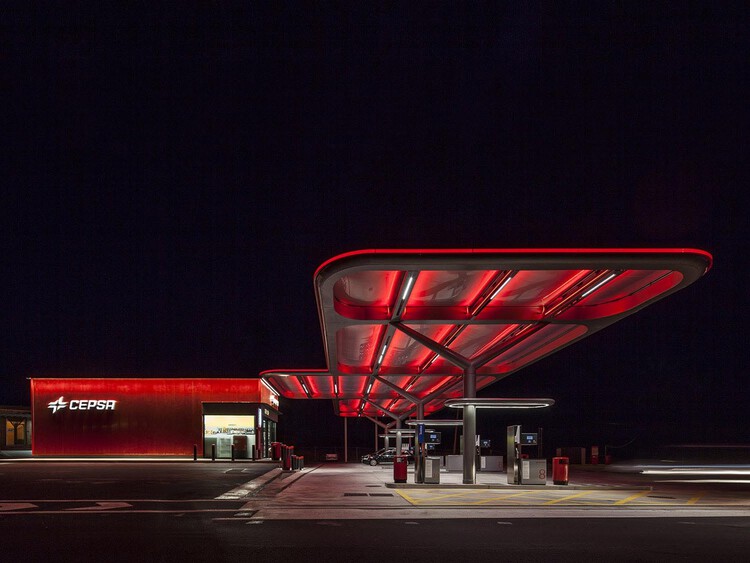 CEPSA Service Station / Saffron Brand Consultants + Malka+Portús arquitectos. Image © Montse Zamorano
CEPSA Service Station / Saffron Brand Consultants + Malka+Portús arquitectos. Image © Montse Zamorano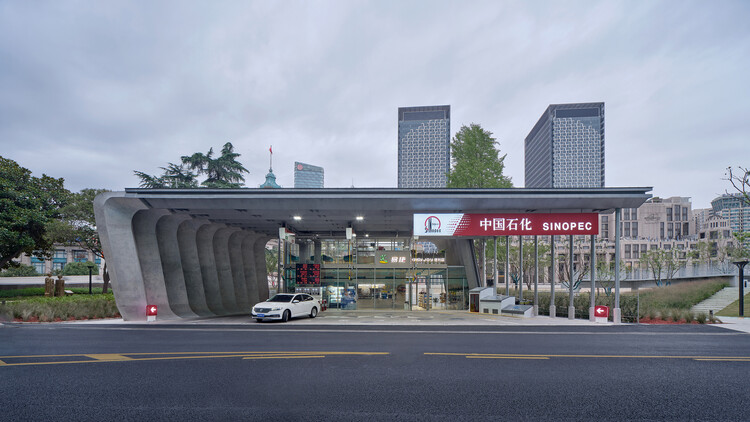 Renovation of No.1 Sinopec Gas Station / TJAD Original Design Studio. Image © ZY Architectural Photography
Renovation of No.1 Sinopec Gas Station / TJAD Original Design Studio. Image © ZY Architectural Photography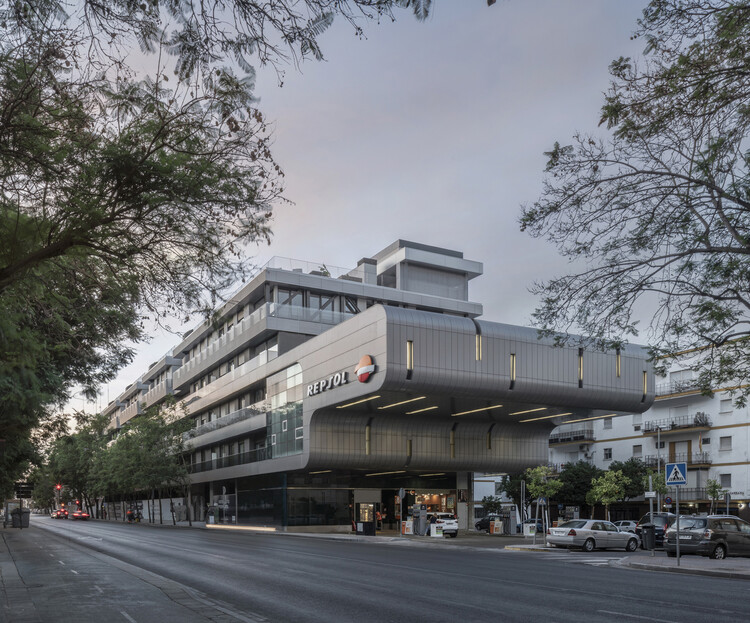 Ramón y Cajal Residential Building / Estudio Alvarez-Sala + Aybar-Mateos Arquitectos + Hombre de Piedra. Image © Jesús Granada
Ramón y Cajal Residential Building / Estudio Alvarez-Sala + Aybar-Mateos Arquitectos + Hombre de Piedra. Image © Jesús Granada